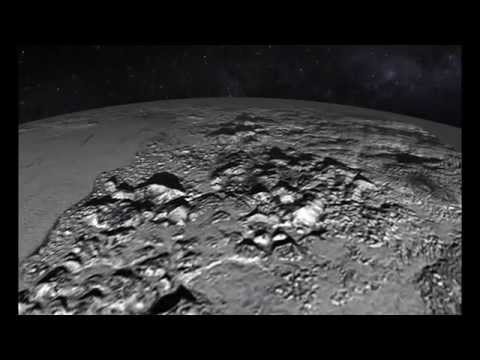5 Insane Space Missions To Look Forward to in 2022
From deflecting the path of an asteroid to sending the sixth rover on Mars, humanity is set to achieve new milestones in space exploration this year. The previous year ended on an exciting note with the James Webb Space Telescope launch. The most advanced space telescope built to date, James Webb, will send its first pictures of the cosmos this year. It will show how our universe looked in its cradle. But 2022 is not only about the James Webb Space Telescope. There are many exciting missions to look forward to this year. Let’s have a look at them one by one. Psyche is a unique asteroid present in the asteroid belt between Mars and Jupiter. It’s a heavy, metal-rich asteroid that could be worth $10 quintillion. It appears extremely blurry from Earth, but the radar data suggests that it is shaped somewhat like a potato and spins on its side. Psyche is believed to be an exposed iron core of a protoplanet that remained after a violent collision with another object stripped off its mantle and crust. In August 2022, NASA will launch the Psyche Mission. This spacecraft will take almost four years to reach its target, and then, it will orbit the asteroid for two years. In these two years, the probe will take close pictures of the metallic asteroid, map its surface, and look for evidence of an ancient magnetic field. The orbiter will also study the neutrons and gamma rays coming from the asteroid’s surface to determine its elemental composition. Psyche will be the first mission ever to explore an asteroid with a surface comprising substantial amounts of metal rather than rock or ice. Moreover, the mission will test a sophisticated new laser communication technology that will encode data in photons at near-infrared wavelengths rather than radio waves to establish communication between the orbiter and the stations on Earth. After the successful landing of Perseverance on the Red Planet in 2021, we are going back to Mars with the ExoMars mission. A collaboration between the European Space Agency and the Russian Space Agency, ExoMars is a pair of missions designed to understand if life existed on Mars. The first part of the program was launched in 2016. It placed the Trace Gas Orbiter into Mars orbit and released the Schiaparelli EDM lander. Unfortunately, although the orbiter is still operational, the lander crashed on the planet’s surface. The second part of the program, which focuses explicitly on the 2022 ExoMars Rover and Surface Platform, is scheduled to launch in September of this year. Exomars will land on Mars after nine months of launch. Doing so, it will deliver a European rover named Rosalind Franklin via a Russian lander, Kazachok, that will also serve as a surface platform for conducting science experiments. Moreover, the rover will travel across the Martian surface to search for signs of life. It will collect samples with a drill and analyze them with next-generation instruments. If successful, ExoMars will be the first mission to simultaneously combine the capabilities to move across the surface and study Mars in depth. On November 23, 2021, NASA’S DART mission lifted off from Vandenberg Space Force Base in California. An abbreviation for the Double Asteroid Redirection Test, this mission targets Dimorphos, a small asteroid-satellite orbiting the near-Earth asteroid Although DART was launched successfully, the actual test for this mission will come in September 2022, when the spacecraft will reach its destination. Then, the spacecraft will deliberately crash itself into the moonlet at a speed of approximately 6.6 km/s. The collision will change the speed of the moonlet in its orbit around the main body. Although the change in speed would only equate to a fraction of 1%, this will change the orbital period of the moonlet by several minutes. Moreover, at this point, the Didymos system will be within 11 million kilometers of Earth. This will allow the ground-based telescopes and planetary radars to make observations to measure the change in momentum and orbital period imparted to the moonlet in a detailed manner. It is worth mentioning that the Didymos system is not a threat to Earth. However, it passes close to the Earth, so it was chosen as the target for the DART mission. DART will be NASA’s first of its kind mission to test planetary defense technology and deflect an asteroid like this. And if things go as planned, one day, this technology could be used to deflect hazardous asteroids on a collision course with Earth. In 2022, India will attempt to land on the Moon after a partially successful Chandrayaan-2 mission. Chandrayaan 2 mission comprised an orbiter, a lander, and a rover. The mission was launched in July 2019. Although the orbiter was successfully deployed around the Moon, the lander crashed on the lunar surface because of a last-minute software glitch. Chandrayaan-3 will be a mission repeat of Chandrayaan-2 but will only include a lander and rover similar to Chandrayaan-2. It will not have an orbiter. India aims to launch Chandrayaan 3 in August this year. It has been over a decade since a spacecraft to the largest planet was launched. But this year, humanity is returning to Jupiter with one of the most awaited missions of the century, Jupiter ICy moons Explorer, better known as JUICE. Scheduled to launch between August 26 to September 15, 2022, on an Ariane 5 rocket from the European Spaceport in Kourou, French Guiana, JUICE will arrive at Jupiter in August 2029 after a 7.6-year-journey. Then, it will spend at least three years studying the Jovian System, which includes three of Jupiter’s largest moons, Ganymede, Europa, and Callisto. The spacecraft will fly by Europa twice and 12 times past Ganymede and Callisto in the first phase. This will enable JUICE to study these moons in unprecedented detail. Following this, the spacecraft will orbit Ganymede in the final phase. JUICE will study Ganymede for at least nine months. This would make JUICE the first spacecraft to orbit any moon other than our own. In addition, the spacecraft will also study the magnetism of the gas giant and measure the gravity fields of the icy moons. So what mission are you most excited about? Please share your thoughts in the comments section and subscribe to our channel for more updates on astronomy and space technology.













